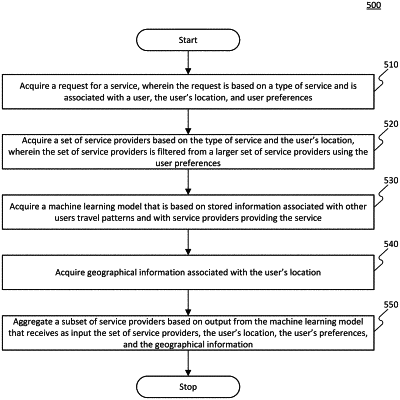| CPC G06Q 50/14 (2013.01) [G06N 20/00 (2019.01); G06Q 30/0205 (2013.01)] | 18 Claims |

|
1. A non-transitory computer readable medium including instructions that are executable by one or more processors to cause a system to perform a method for determining a virtual network based on a location, the method comprising:
acquiring a request for a service, wherein the request is based on a type of service and is associated with a user, the user's location, and user preferences;
acquiring a set of service providers based on the type of service and the user's location, wherein the set of service providers is filtered from a larger set of service providers using the user preferences, wherein the type of service is used to select one or more machine learning models that take the user's location and the user preferences as input to predict service providers;
acquiring a first machine learning model of the one or more machine learning models, wherein the first machine learning model is based on stored information associated with other users travel patterns and with service providers providing the service, wherein the first machine learning model is trained on tradeoff optimization between popular service providers and travel distance to the popular service providers and is determined using a second machine learning model based on reinforcement learning pattern;
acquiring geographical information associated with the user's location; and
aggregating a subset of service providers based on output from the first machine learning model that receives as input the set of service providers, the user's location, the user's preferences, and the geographical information.
|